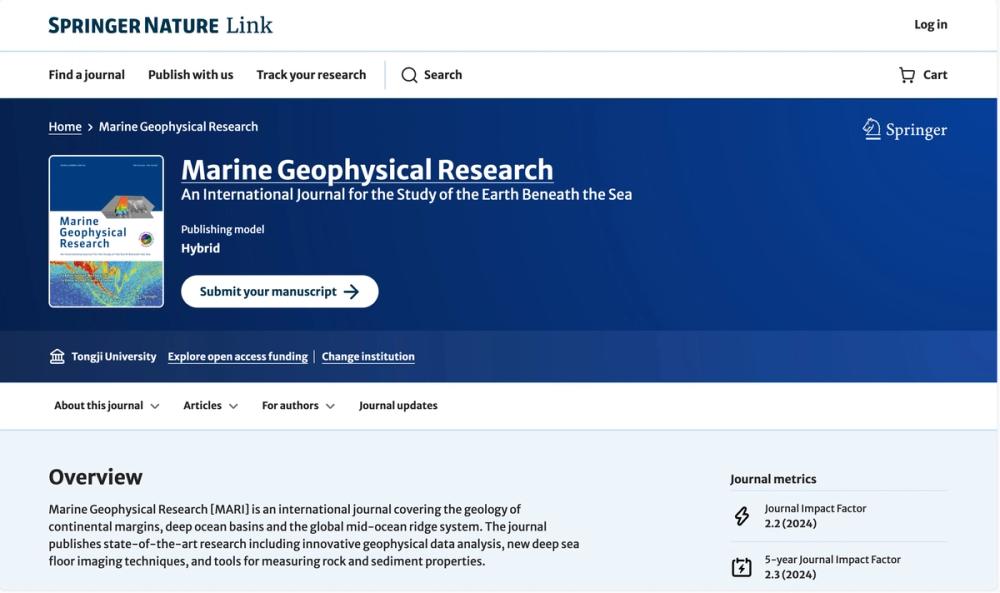Name: Marine Geophysical Research
Link: link.springer.com/journal/11001
Description: Marine Geophysical Research is an international, peer-reviewed journal publishing original research on the geophysics and geology of continental margins, deep ocean basins, and mid-ocean ridges, with a focus on marine processes and exploration.
Key Words: marine geophysics, continental margins, deep ocean basins, mid-ocean ridges, peer-reviewed, geophysical methods, marine geology, ocean exploration
Introduction to Marine Geophysical Research
Marine Geophysical Research (MGR) is a premier international journal dedicated to advancing the understanding of the Earth's marine environments through high-quality, peer-reviewed research. Published by Springer, the journal has been a key platform since its inception in 1970 for scientists studying the geophysical and geological processes shaping continental margins, deep ocean basins, and global mid-ocean ridge systems. It serves as an essential resource for geophysicists, geologists, oceanographers, and researchers in related fields, fostering interdisciplinary studies that deepen our knowledge of marine systems and their role in Earth's broader geodynamic framework.
The journal publishes original research articles, review papers, and data notes that explore a wide range of topics, including seismic studies, magnetic and gravity surveys, seafloor mapping, and the geophysical properties of marine sediments and crust. It emphasizes innovative applications of geophysical methods—such as seismic reflection/refraction, bathymetry, and magnetometry—to investigate submarine processes like plate tectonics, hydrothermal systems, and sediment dynamics. Papers often address critical scientific questions, such as the structure of oceanic crust, the evolution of continental margins, or the geophysical signatures of submarine volcanism and seismicity. The journal also welcomes studies that integrate geophysical data with geological and oceanographic observations to provide comprehensive insights into marine environments.
Marine Geophysical Research operates a Continuous Article Publishing (CAP) model, ensuring that accepted articles are published immediately in an issue, facilitating rapid dissemination of findings to the global scientific community. The journal maintains rigorous editorial standards, requiring submissions to demonstrate novelty, scientific significance, and relevance to marine geophysics. Authors are encouraged to provide clear methodologies, robust data analyses, and open access to datasets, aligning with modern open science practices. The submission process is managed through Springer’s online portal, where authors must adhere to detailed guidelines on manuscript structure, including abstracts (typically 150–250 words), figures, and references formatted according to Springer’s standards.
The journal’s scope extends to both fundamental and applied research, with applications in marine resource exploration, environmental monitoring, and hazard assessment (e.g., tsunamis and submarine landslides). It is particularly valued for its focus on high-impact studies that contribute to global geophysical datasets and models. Marine Geophysical Research also supports interdisciplinary collaboration by publishing work that bridges geophysics with fields like marine biology, climatology, and tectonics, making it a vital resource for understanding complex ocean systems.
With a global readership and a reputation for excellence, Marine Geophysical Research is indexed in major databases like Scopus and Web of Science, ensuring high visibility and citation potential. Its commitment to advancing marine science, coupled with its emphasis on rigorous, transparent, and innovative research, positions it as a leading journal for geophysical studies of the world’s oceans.




